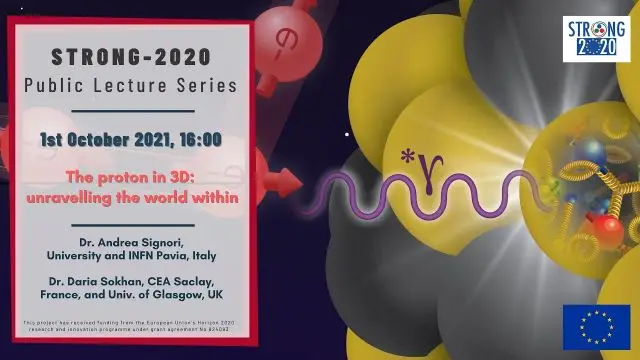The proton in 3D: unravelling the world within - Daria Sokhan, Andrea Signori
3 سنوات
58 الآراء
الفئة:
وصف:
Almost all of the mass of the visible universe has long been known to reside in protons and neutrons, the constituents of nuclei that make up visible matter. Yet what lies at the core of this matter? How well do we understand the physics that shapes it, and provides the foundations for the world around us?
In the late 1960s the MIT-SLAC experiments offered the first hints to address these questions, by scattering high-energy electrons from deep inside protons. This opened the way to experimental investigations of nucleon structure and provided the first essential evidence of pointlike constituents within the nucleons, which were identified with the quarks predicted by the newly-developed Quark Model of the nucleon. We have come a long way since then, but the picture of the nucleon is still far from complete: much remains to be understood about the internal dynamics of the nucleon and its description in terms of quarks and gluons, which are governed by the underlying theory of Quantum Chromodynamics (QCD).
In this public lecture we will discuss some key aspects of “nucleon tomography”, namely the investigation of the structure of nucleons through Quantum Chromodynamics (QCD), focusing on the strong interplay between theory and experiments and presenting the existing and future machines that will provide groundbreaking information to help us dig into the mysteries at the core of matter.
In the late 1960s the MIT-SLAC experiments offered the first hints to address these questions, by scattering high-energy electrons from deep inside protons. This opened the way to experimental investigations of nucleon structure and provided the first essential evidence of pointlike constituents within the nucleons, which were identified with the quarks predicted by the newly-developed Quark Model of the nucleon. We have come a long way since then, but the picture of the nucleon is still far from complete: much remains to be understood about the internal dynamics of the nucleon and its description in terms of quarks and gluons, which are governed by the underlying theory of Quantum Chromodynamics (QCD).
In this public lecture we will discuss some key aspects of “nucleon tomography”, namely the investigation of the structure of nucleons through Quantum Chromodynamics (QCD), focusing on the strong interplay between theory and experiments and presenting the existing and future machines that will provide groundbreaking information to help us dig into the mysteries at the core of matter.




